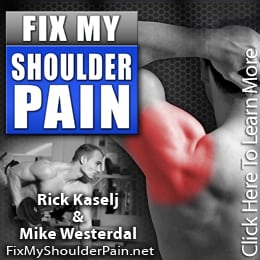Frozen Shoulder Treatment
Frozen Shoulder Treatment
Treatment of Frozen Shoulder Frozen shoulder can be a painful condition with debilitating effects, but it can be resolved by an aggressive combination of conservative treatment modalities. As mentioned, without an aggressive and consistent approach, frozen shoulder can have lifelong and permanent problme. Most cases of frozen shoulder improve, but the treatment process can be slow. On average, aggressive therapy treatments are provided for three to four months before normal shoulder motion is regained.
If you have been diagnosed with frozen shoulder, you have to be patient. It may take months before the signs and symptoms are resolved.
Frozen Shoulder Medication
During the initial stages of the disease, your physician may prescribe oral non-steroidal anti-inflammatory drugs, such as ibuprofen and naproxen, to decrease the inflammation. If oral NSAIDs fail to reduce the intensity of symptoms, intra-articular corticosteroid injections may be administered to control the inflammation and to increase the shoulder’s range of motion. A long-acting anesthetic is given along with the cortisone injection for maximal pain relief.
Frozen Shoulder & Physical Therapy
An integral part of frozen shoulder treatment is physical therapy. Patients diagnosed with frozen shoulder are strongly encouraged to closely work with a physical therapist to control the stiffness and pain and to regain close to normal range of motion of the affected shoulder. Researchers found that physical therapy associated with administration of intra-articular cortisone injections can improve the shoulder’s range of motion more rapidly and effectively than does administration of cortisone injections alone (Roy, 2012).
Physical therapy sessions may include the following modalities to resolve the symptoms of frozen shoulder syndrome:
- Ultrasound is a treatment modality that provides relief of pain through the utilization of high or low frequency sound waves. The sound waves are transmitted to involved tissues and blood vessels to promote tissue relaxation; thus, ultrasound has been a good option for the treatment of muscle tightness and spasms. The warming effects of ultrasound may also facilitate dilation of the blood vessels, improving the flow of blood to the area for healing. The sound waves are used to decrease inflammation, as well.
- Transcutaneous Electrical Neuromuscular Stimulation (TENS), also known as TENS, decreases inflammation and pain by the transmission of electrical current through electrodes applied to the involved area. The TENS relieves pain by disrupting or interrupting the transmission of pain signals to the surrounding nerves.
- Magnetotherapy with electromagnetic fields is the application of electromagnetic energy generated by an electric current to the involved area. The application of electromagnetic energy aims to correct the electromagnetic frequencies within the body that go out of balance.
The main goal of physical therapy is to regain the shoulder’s full range of motion. These physical modalities are usually applied at the start of the therapy to control the pain and to ease muscle spasm. Ice packs are also applied to numb the area and decrease the inflammation and pain. Hot moist packs are also used to relax the muscles. Overall, these physical modalities are used by physical therapists to loosen up the shoulder joint, specifically the joint capsule, before performing frozen shoulder exercises.
As soon as your shoulder is ready, range-of-motion exercises, stretching exercises, and strengthening exercises are implemented. Frozen shoulder exercises are essential in the treatment of frozen shoulder and in the prevention of further injuries that may lead to frozen shoulder syndrome. Frozen shoulder xercises are discussed in the next chapter.
Frozen Shoulder Surgery
There are some cases where the frozen shoulder fails to respond satisfactorily to conservative modalities that were implemented for an adequate period of time. In such cases, a surgical intervention should be considered.
Some physicians may recommend manipulation under general anesthesia, a procedure where the physician aggressively stretches the affected shoulder joint to loosen up the tight joint capsule and to break up the scar tissue. A patient may require more than one session of manipulation under anesthesia. This procedure has risks. The manipulation process may injure the brachial plexus, a network of nerves that run from the spine and proceed through the neck, the armpit region, and into the arm.
A study by Jacobs and colleagues in 2009 found that there is no evidence supporting manipulation under anesthesia as a better option for the treatment of frozen shoulder (Roy, 2012). Controlled capsular release through arthroscopy has been considered as a more promising surgical intervention for treating frozen shoulder.
Rick Kaselj, MS
.



